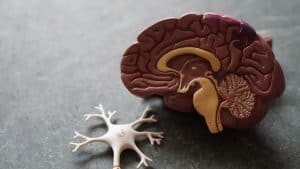
Gene therapy: Advanced treatments for a new era
pharmafile | March 3, 2017 | News story | Medical Communications | gene therapy
Aranca discusses the considerable advances that have occured in the last few years in gene therapy.
Considerable research has been conducted in genomics in the past two decades. Extensive research in the gene therapy domain began in 2001, when two separate versions of human genome sequences were published. These drafts contained 30,000 genes, which were used to decipher gene function, gene abnormality, and malignant alternations at the gene levels.
James Watson was quoted as stating, “We used to think that our fate was in our stars, but now we know, in large measures, our fate is in our genes.” Genes are the functional unit of heredity. When altered, the proteins that they encode are unable to carry out their normal functions. Gene therapy (the use of genes as medicine) is basically used to correct defective genes.
Gene therapy involves inserting/deleting/correcting genetic material into human cells to fight or prevent diseases. It is a promising tool not only for cancer but for several other diseases, such as Parkinson’s, HIV, severe combined immuno-deficiencies and hemophilia, to name a few.
Gene therapy initially encountered a lot of problems as people considered it unethical to use humans as subjects for clinical trials. However, as time passed, gene therapy has proved to be a useful tool to cure several forms of disease.
In this report, we’ll cover the challenges associated with gene therapy, various modes of administration of gene based therapies, expected future of gene therapy, companies that are investing heavily in gene therapy research, as well as FDA approved gene-based drugs that are currently available in the market or undergoing clinical trials.
Challenges associated with developing genetic treatments
Dealing with diseases at a genetic level is not easy. While gene therapy isn’t a new field, it has witnessed very limited success despite over half a century research and development.
Researchers are constantly working on overcoming several challenges being faced by gene therapy.
Administering gene therapy
Gene therapy may be defined as the introduction of genetic material into defective cells for a therapeutic purpose.
While gene therapy holds great potential as an effective means for selective targeting and treatment of disease, the field has seen relatively slow progress in the development of effective clinical protocols.
Although identifying genetic factors that cause a physiological defect is pretty straightforward, successful targeted correction techniques are proving continually elusive. Creating an ideal delivery vector to target diseased — and only diseased — tissue has proved difficult for those researchers toiling away tirelessly in their search for the safe treatments of tomorrow.

A huge challenge in the development of corrective genes is getting that genetic material to the site of treatment and getting it expressed. Vector systems are considered promising delivery vehicles.
Vector systems are available, which deliver the corrected gene as therapeutic. These include viral and non-viral vectors.
Viral Vectors
These are virus-based vectors. Examples include the retrovirus vector, adeno virus vector system, adeno associated virus vector, and herpes simplex virus. Extensive research is being conducted on the various viral vectors used in gene delivery. Here’s a snapshot depicting some of the research being conducted on various viral vectors:
Non-viral Vectors
Examples of non-viral vector systems include pure DNA constructs, lipoplexes, DNA molecular conjugates, and human artificial chromosomes. Owing to the following advantages, non-viral vectors have gained significant importance in the past few years:
- Less immunotoxic
- Risk-free repeat administration
- Relative ease of large-scale production
A major disadvantage is that the corrected gene needs to be unloaded into the target cell, and the vector has to be made to reach the required treatment site.
Possible Strategies to Improve Current Viral/Non-viral Vector Systems
Here’s a list of likely strategies that can be employed to improve current vector systems:
- Making the systems correctly target the defective cell
- Rendering them capable of transcription
- Making the systems efficiently penetrate the cell membrane barrier
- Making them appropriate bio distribution vectors
- Improving their circulation time in the body
- Making the systems efficiently interact with the serum component’s therapeutic material so the therapeutic material is not lost
- Ensuring that the systems do not react with the immune system and macrophages
- Rendering them capable to interact with a defective cell surface
- Making the systems competent to escape degradation by nucleases
- Maintaining the correct gene expression over a longer time
Patent filing in gene therapy has picked up in the last decade, primarily due to unmet requirements in life-threatening diseases.

Gene Therapy Considered a Path-changing Treatment for the Coming Era
Gene therapy has transitioned from the conceptual, technology-driven, laboratory research, to clinical trial stages for a wide variety of diseases. In addition to curing several genetic disorders, such as Hemophilia, Chronic Granulomatous Disorder (CGD) and Severe Combined Immune Deficiency (ADA-SCID), it is also being tested to cure acquired diseases acquired diseases such as cancer, neurodegenerative diseases, influenza and hepatitis, to name a few.
Gene therapy is not limited to any particular disease. It is also proving to be a promising treatment for rare diseases such as X-linked adrenoleukodystrophy.
This therapy has proved effective in research conducted for the following diseases:
Fat Metabolism Disorder
Gene therapy is used to correct rare genetic diseases caused due to lipoprotein lipase deficiency (LPLD). This deficiency leads to fat molecules clogging the blood stream. An adeno-associated virus vector is used to deliver the corrected copy of the LPL to the muscle cells. This corrected copy prevents the excess accumulation of fat in the blood by breaking down the fat molecules. In 2012, the European Union approved Glybera, the first viral gene therapy treatment for LPLD, manufactured by UniQure. Glybera is likely to be approved for the American market by 2018.
Adenosine Deaminase (ADA) Deficiency
Gene therapy has successfully been used to treat another inherited immune disorder: ADA deficiency. More importantly, none of the patients undergoing this treatment developed any other disorder. The retroviral vector is used in multiple small trials to deliver the functional copy of the ADA gene. Primarily, all the patients involved in these trials did not require any injection of ADA enzyme as their immune functions had immensely improved.
Severe Combined Immune Deficiency (SCID)
A lot of documented work is already available regarding treating this immunodeficiency with gene therapy; however, clinical trials have not shown promising results. The viral vectors used during the trials triggered leukaemia in patients. Since then, the focus of the research and trials has been on preparing new vectors that are safe and do not cause cancer.
Hemophilia
Patients with haemophilia suffer excessive blood loss as the blood clotting protein (Factor IX) is absent. Researchers have successfully inserted the missing gene in the liver cells using an adeno-associated viral vector. After undergoing this treatment, patients experienced less bleeding as their body was able to create some of the Factor IX protein.
Cystic Fibrosis (CF)
CF is a chronic lung disease caused due to a faulty CFTR gene. Genes are injected into cells using a virus. Recent studies also include testing the cationic liposome (a fatty container) to deliver DNA to the faulty CFTR gene, thus making the use of the non-viral gene carrier more successful. Phase II trials using this therapy were published in early 2015, which promised a novel therapeutic approach to CF.
β-thalassemia
Clinical trials on gene therapy for β-thalassemia (the faulty beta-globin gene, which codes for an oxygen-carrying protein in RBC) can be tracked back to 2007. Blood stem cells were taken from the patient’s bone marrow and a retrovirus was used to transfer a working copy of the faulty gene. The modified stem cells were re-injected into the body to supply functional red blood cells. This treatment, once conducted, lasted over seven years, even if the patient did not undergo blood transfusion during this time.
Hereditary Blindness
Currently, gene therapy is being tested to treat the degenerative form of inherited blindness, where patients lose the light-sensing cells in their eyes with time. Experimental data suggests that the animal models of a mouse, rat and dog show slow or even reverse vision loss using gene therapy.
The most important advantage associated with gene therapy for eye disorders is that AAV (adeno-associated virus) cannot shift from the eye to other body parts and hence does not cause an immune reaction.
In one of the trials, gene therapy was used to improve the vision of a patient with a degenerative blindness named Leber Congenital Amaurosis (LCA). However, although their vision improved, the retina kept degenerating with time.
Another trial reported that the vision of six of nine patients who suffered from degenerative blindness (choroideremia) had improved when the corrected form of REP1 was delivered to them using a viral vector.
Parkinson’s Disease
Patients with Parkinson’s disease lose the ability to control their movement as their brain cells stop producing the dopamine molecule used for signaling. A small group of patients showed improved muscle control when a small area of their brain was treated with a retroviral vector that contained dopamine-producing genes.
Top Players in Gene Therapy
A majority of the big pharmaceutical and biotech companies are actively researching the various aspects of gene therapy. A lot of research is also being conducted by universities. Players with high patenting activity include:
- Univ. of California
- Du Pont
- Roche
- Inserm
- Novartis
- Univ. of Texas
Related Content

Vivet Therapeutics gains €4.9m for gene therapy development
Vivet Therapeutics has announced that it has received €4.9m financing from the French Government for …

Evox Therapeutics enters agreement for next generation gene therapy for heart disease
Evox Therapeutics has announced a research collaboration and option agreement with the Icahn School of …

SNIPR Biome reports positive findings for first-in-human, CRISPR-based microbial gene therapy
Danish CRISPR-based microbial gene therapy company SNIPR Biome have announced positive interim data from its …









